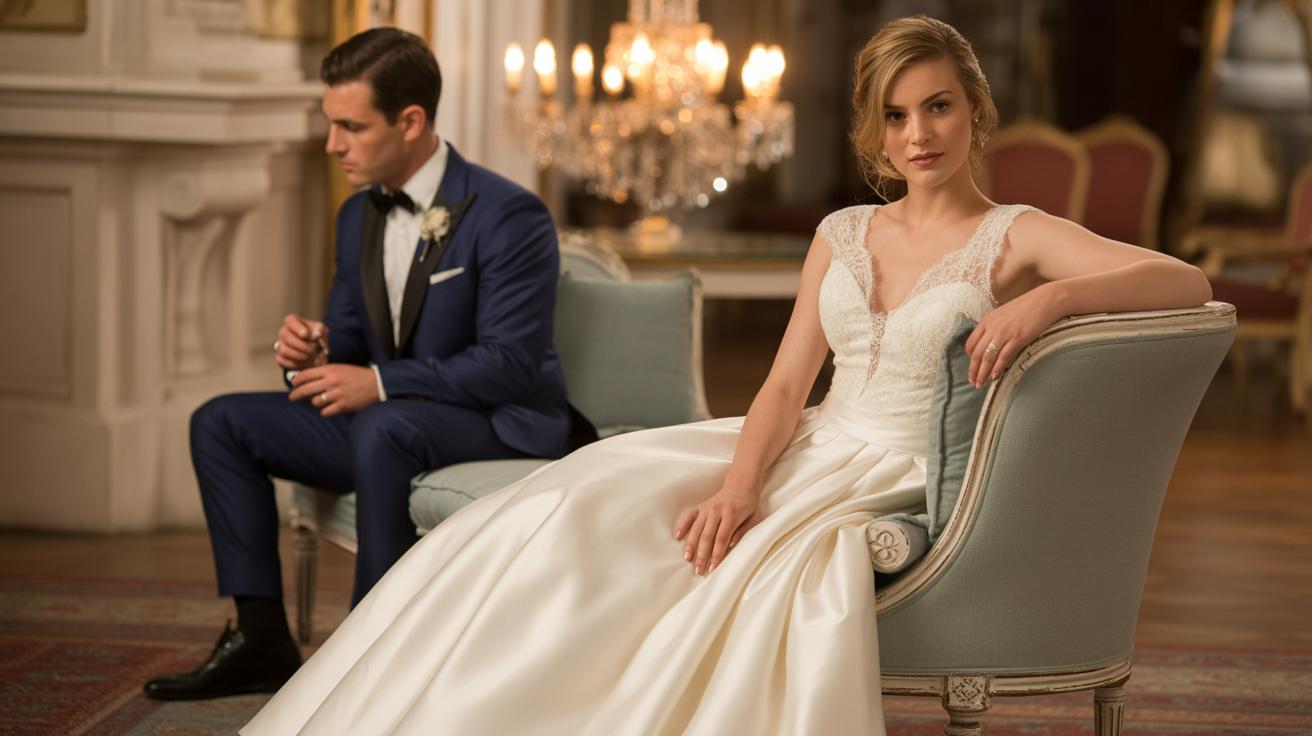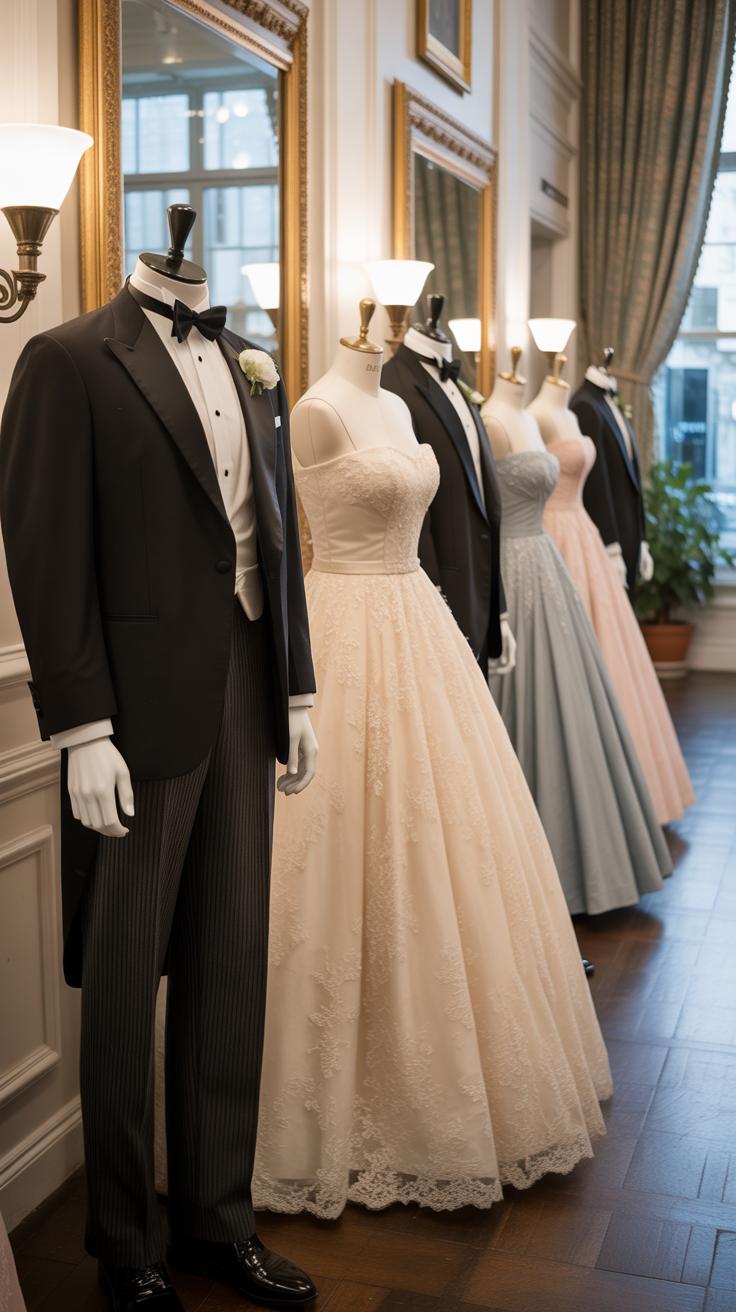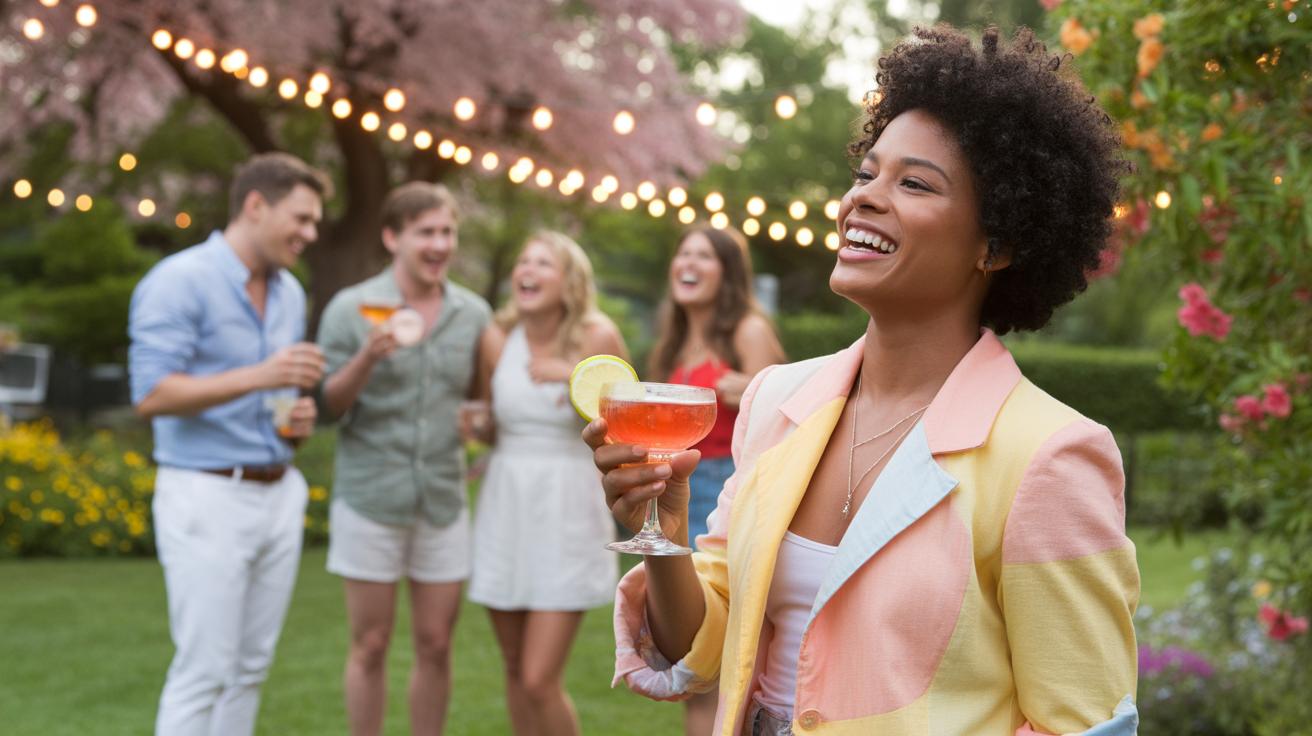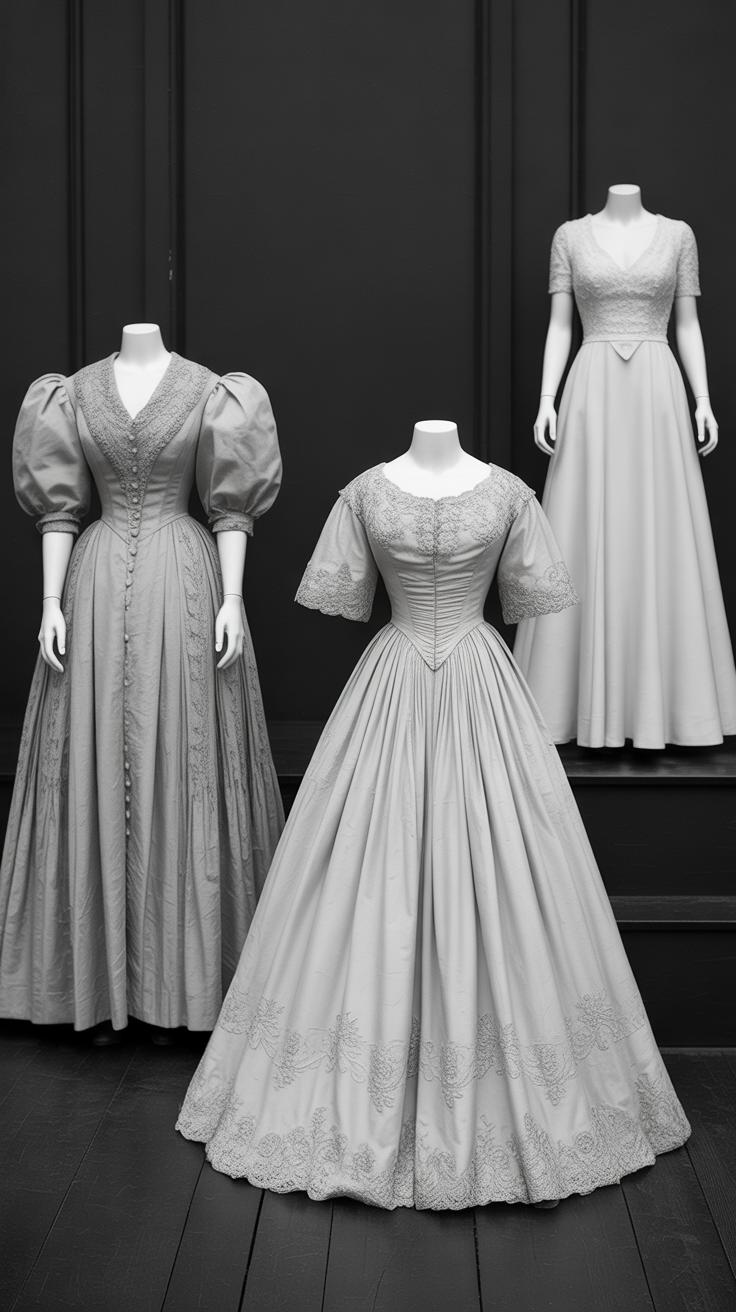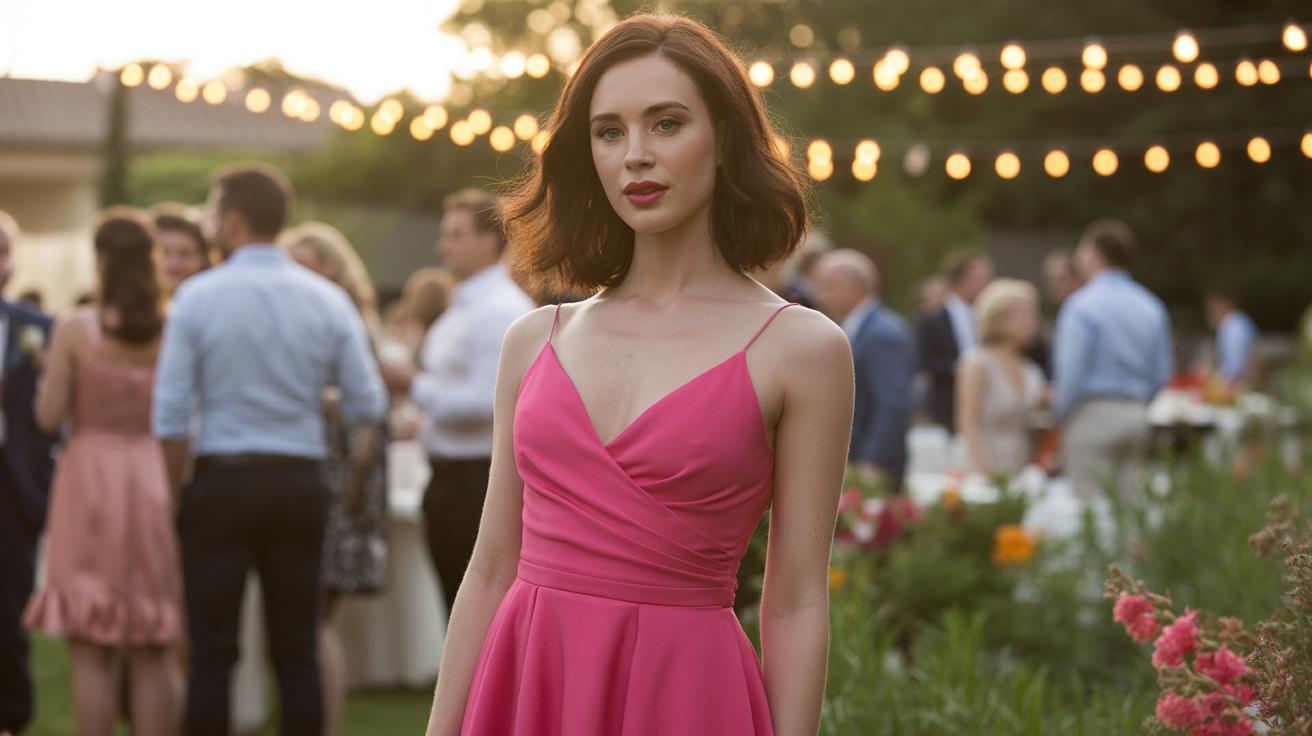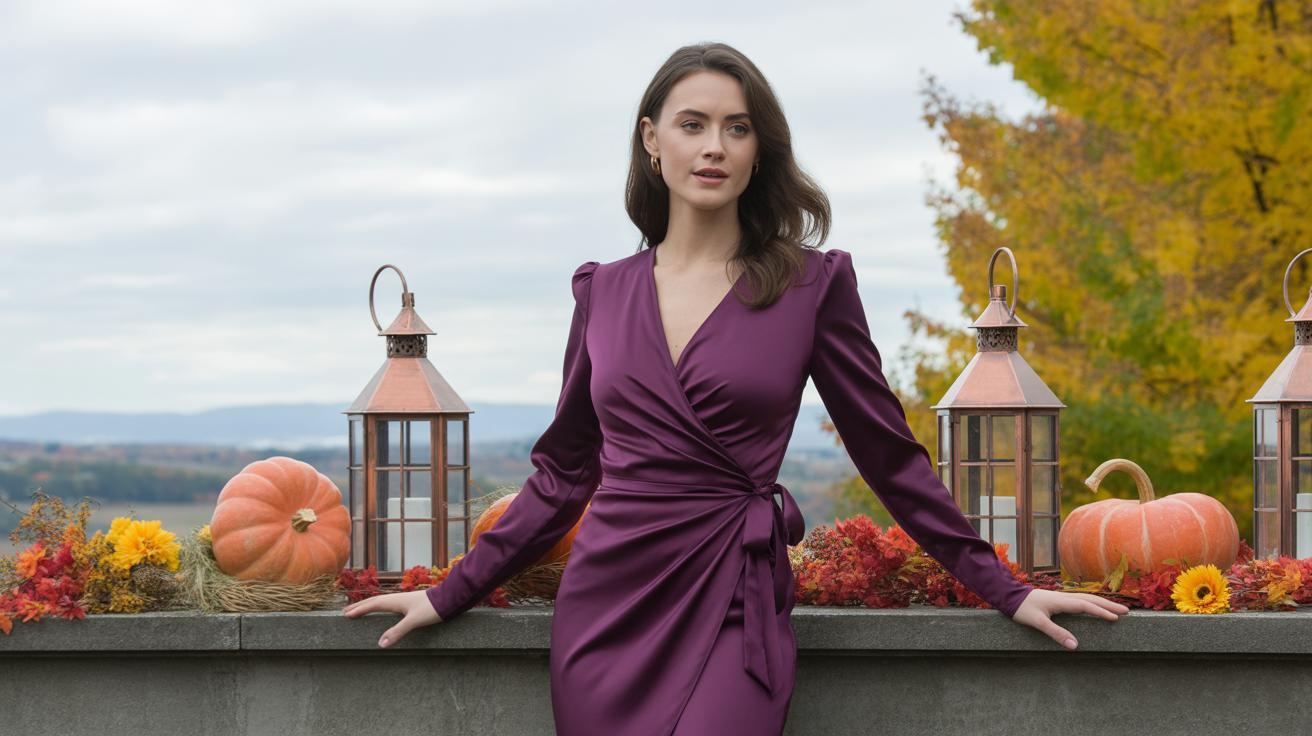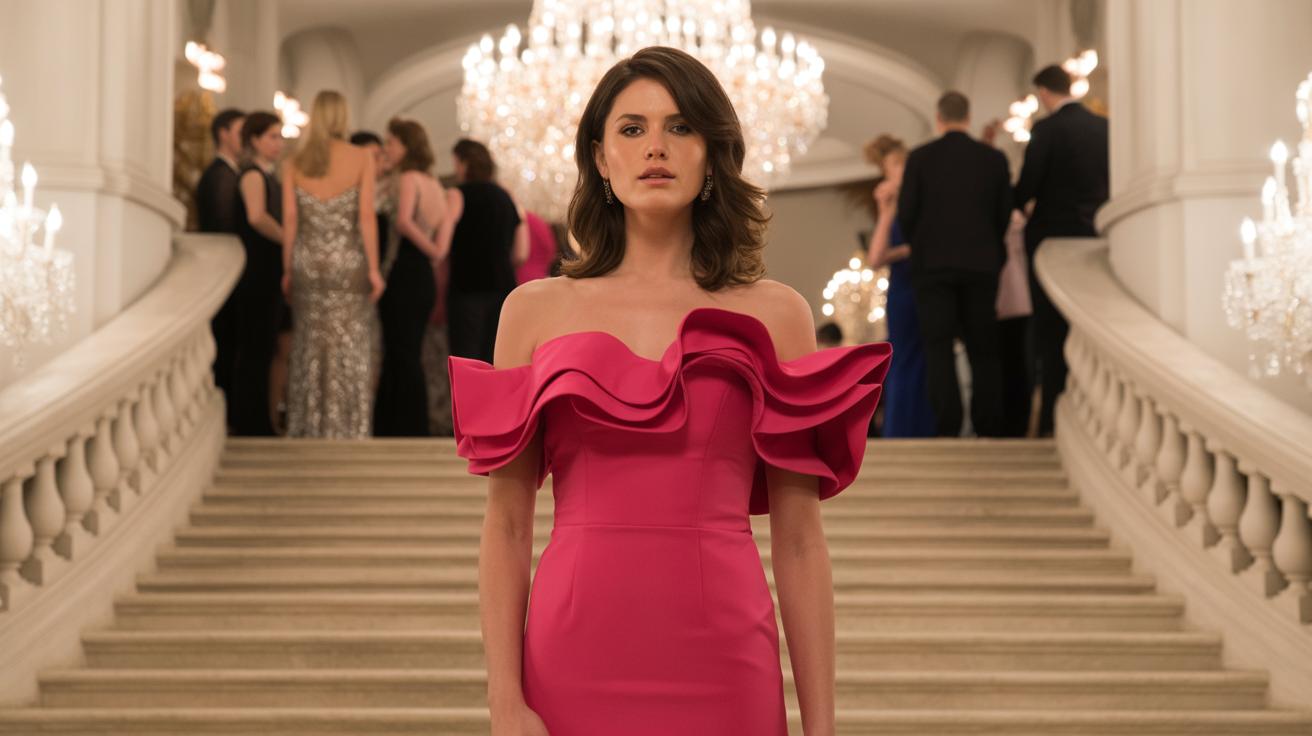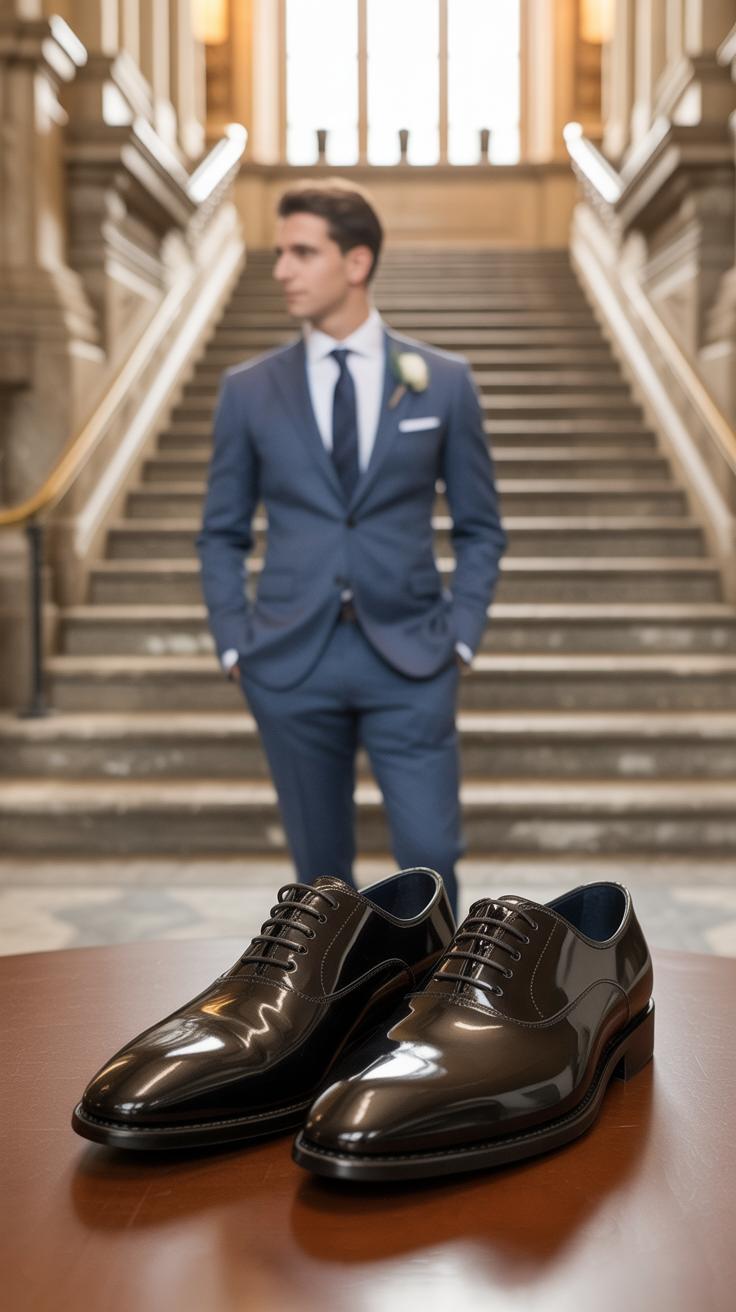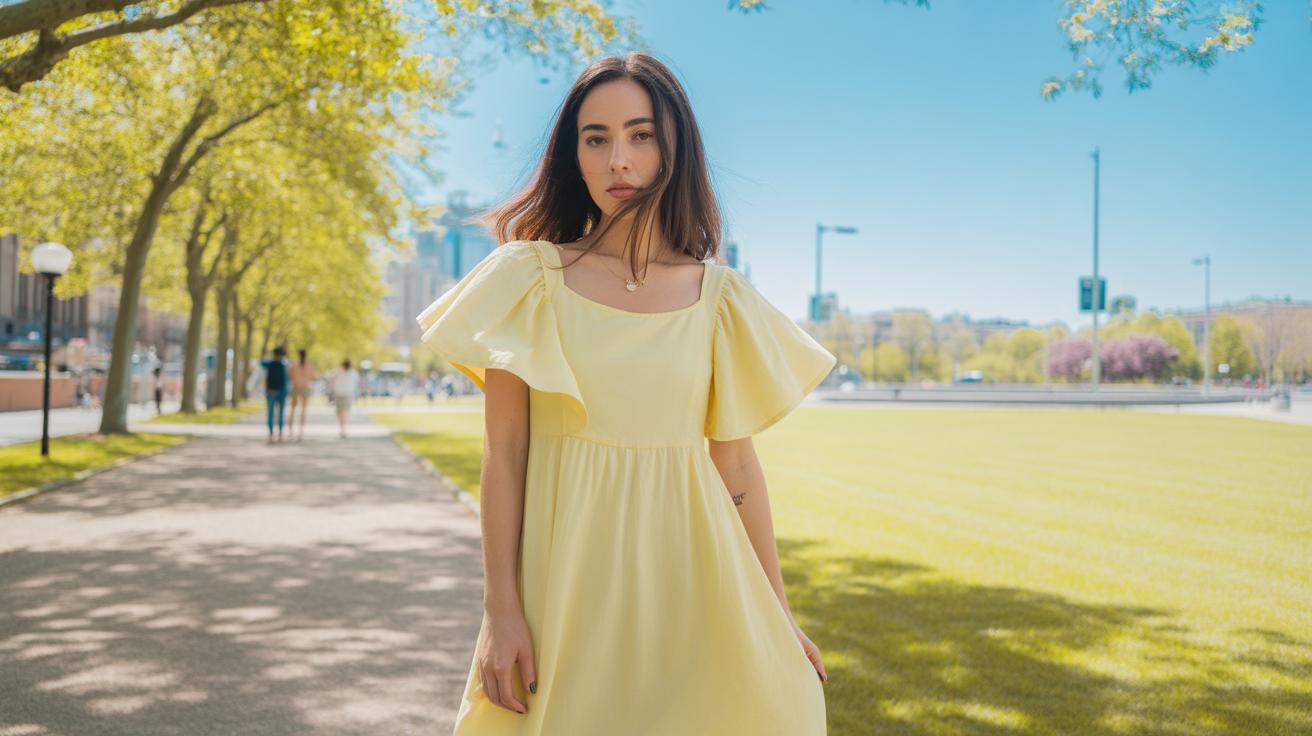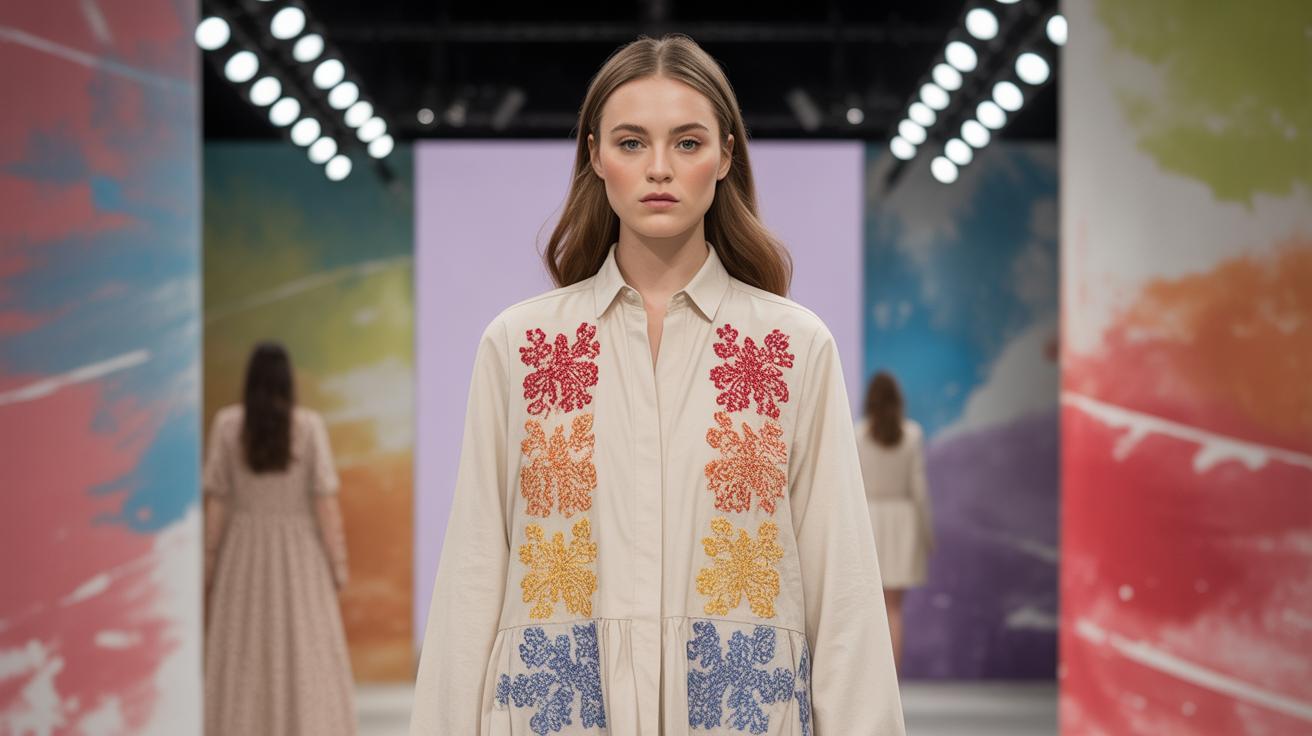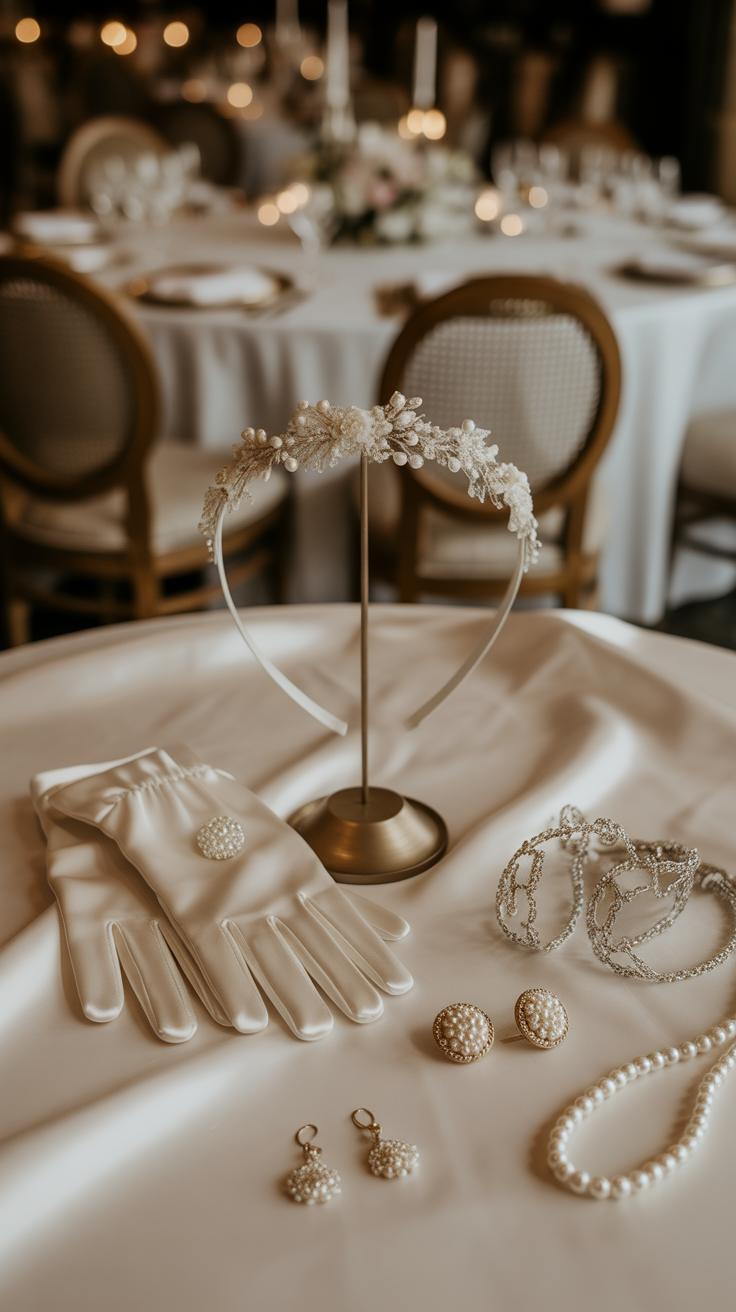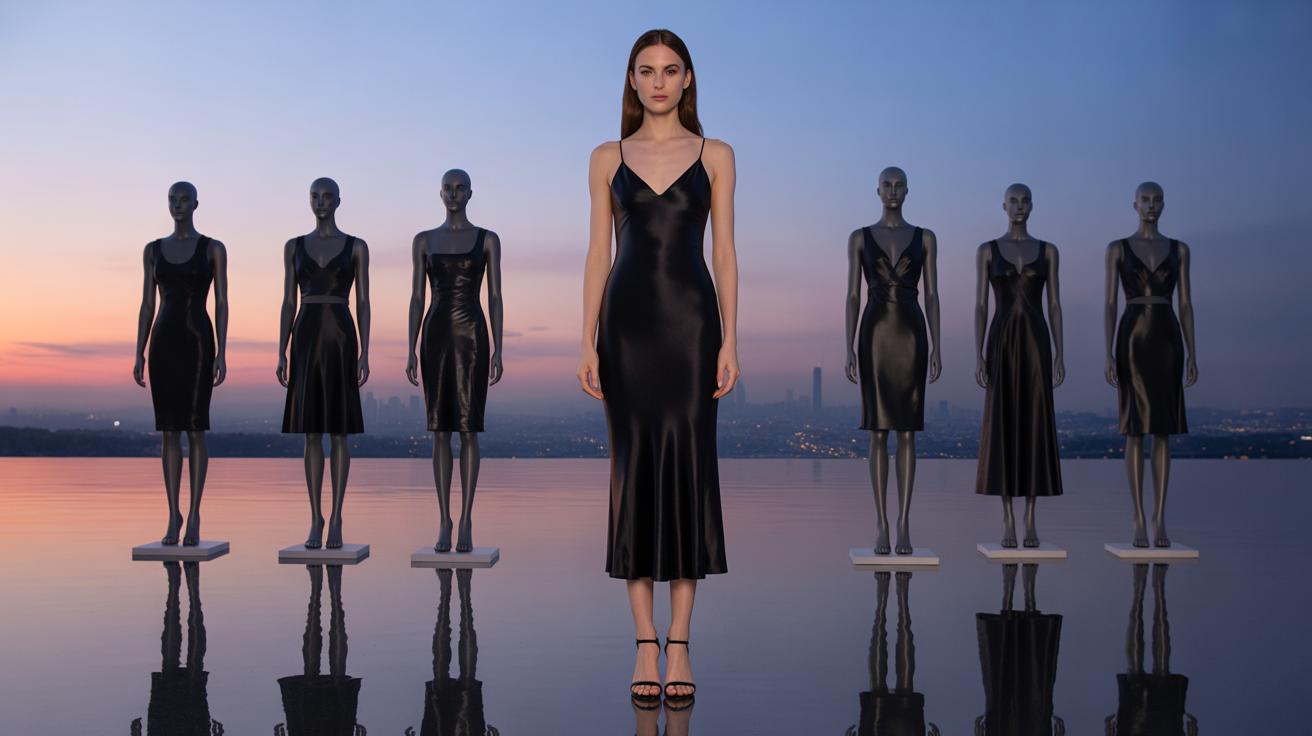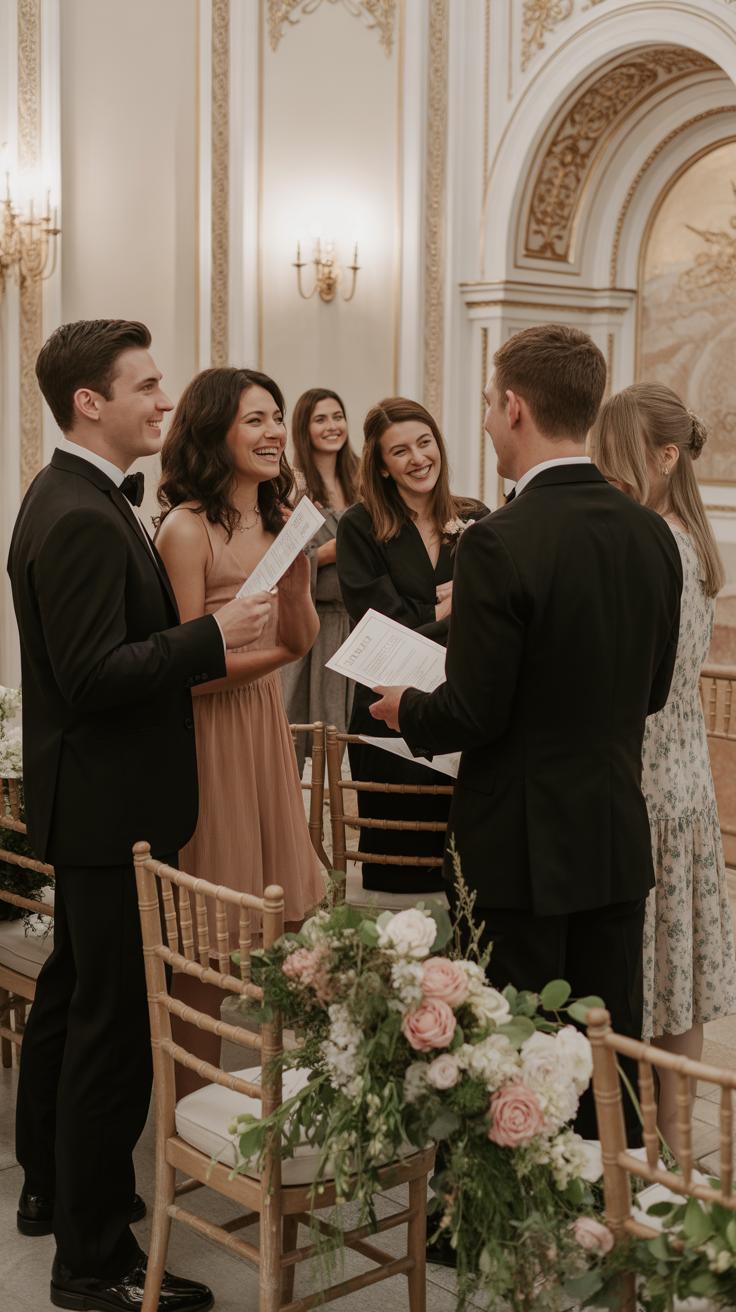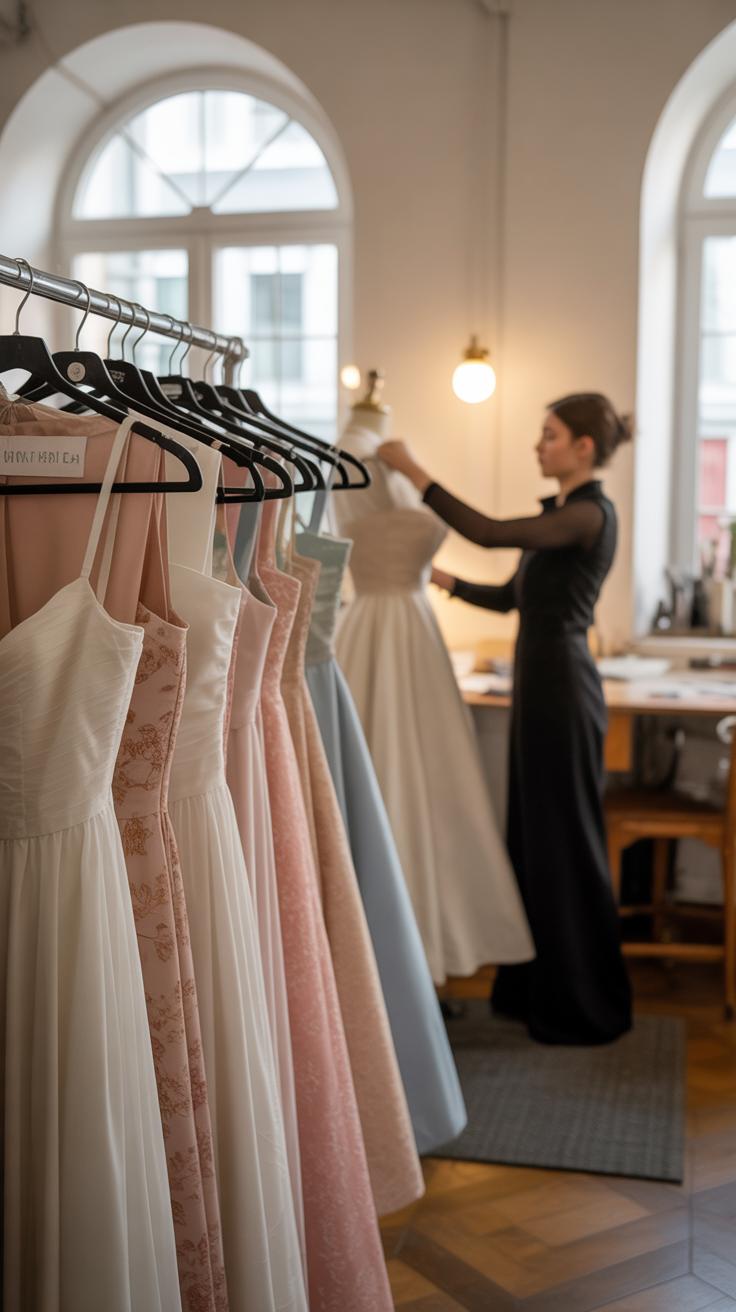Introduction
Choosing the right attire for a formal wedding can be a challenge. You want to look sharp and elegant, but comfort matters too. Formal wedding attire follows traditional dress codes and styles that fit the event’s tone. Understanding these codes helps you pick clothes that suit the occasion and your personal taste. Whether you are the bride, groom, or a guest, your outfit makes an important impression. How can you stay elegant without sacrificing comfort?
Formal wear usually means sophisticated dresses and suits worn for grand occasions. In weddings, this means gowns and tuxedos or suits with specific accessories. These clothes have a long tradition that shapes how people dress today. Modern trends allow changes to make outfits lighter and more wearable. Knowing the history and the current styles lets you find options that feel good and look great. What choices will help you balance classic formality and your comfort on this special day?
Understanding Formal Wedding Attire
Formal wedding attire sets the tone for a wedding event. It means dressing in a way that shows respect for the occasion and the people involved. For men, this often means wearing a tuxedo or a dark suit with a dress shirt and tie. Women typically choose long gowns or elegant cocktail dresses. These traditional expectations help guests feel part of the celebration and keep the event feeling special.
A formal outfit usually includes polished shoes, carefully selected accessories, and garments made from quality materials like silk, satin, or fine wool. The structure and fit of clothing also contribute to formality, with tailored cuts preferred over casual or loose styles. When you choose formal attire, you help create a cohesive, polished look that matches the wedding’s importance.
What Makes Wedding Attire Formal
Materials like silk, satin, lace, and fine wool signal formality. These fabrics catch the eye and hold shape well, lending an air of sophistication. Cuts for men often include slim or classic tailoring in suits and tuxedos, while women’s dresses may feature fitted bodices, full skirts, or sleek silhouettes.
Colors usually stay in the neutral or deep color family, such as black, navy, gray, or jewel tones. White is reserved for the bride. Accessories like cufflinks, ties, pocket squares, and evening bags elevate the outfit. For example, a black bow tie instantly makes a suit formal. Women often wear fine jewelry and heels to complete their look. These details mark the outfit as special and tied to the event’s significance.
Why Formality Matters at Weddings
Weddings honor a major life event, so dressing formally shows you value the occasion and those hosting it. Formal dress codes create clear expectations that help guests feel connected and respectful of the ceremony and celebration.
Social customs also support formality. Dressing up signals respect for tradition and attention to social etiquette. When everyone follows the dress code, it encourages unity and helps avoid distractions or mismatched dressing that can shift focus away from the couple.
Wearing formal attire also respects other guests, showing you care about presenting yourself well in a social setting. Think about how your choice affects others’ experience and how you want to be remembered from the event. Matching the formality level preserves the atmosphere and importance that weddings deserve.
History and Evolution of Formal Wedding Wear
Formal wedding attire has shifted significantly through the centuries, reflecting changes in culture, class, and fashion. Early weddings often followed the trends of their era’s elite, showing power and wealth more than personal style. Over time, these grand displays gave way to styles focusing on elegance and refinement.
The Victorian era standardized the white wedding dress for brides, popularized by Queen Victoria herself. This choice set a trend that still influences modern Western weddings. Men’s formal wear evolved from military uniforms and elaborate court dress to simpler tuxedos and suits.
Dress codes have loosened in recent decades. Couples now mix tradition with comfort and personal expression. Formal doesn’t always mean stiff or uncomfortable anymore. This shift affects your choices today—balancing respect for tradition with your desire to feel your best.
Traditional Attire Origins
Formal wedding clothing has roots in European court dress, where royalty and nobility used elaborate fabrics and designs to signal status. Rich silks, heavy embroidery, and intricate lace were standard. These garments weren’t just about appearance—they reflected social rank and wealth.
Western wedding traditions took cues from these royal displays. Brides wore rich, heavily decorated gowns to symbolize purity and status, while grooms donned tailored suits reflecting their social standing. The white wedding dress emerged from Queen Victoria’s choice to wear white silk lace, shifting bridal fashion from colorful robes to a symbol of purity and elegance.
Elements like long trains, veils, and gloves also trace back to court customs. Understanding these origins helps explain why these styles remain part of formal attire today and why you might want to keep certain traditional touches in your outfit.
Modern Trends in Formal Wedding Dresses and Suits
Today’s formal wedding wear increasingly balances elegance with comfort. You can find dresses made with stretchy lace, breathable silks, or lightweight crepes that move with you rather than restrict. Designers incorporate clean lines and less bulky layering to reduce heaviness.
For men, suits now often feature unstructured jackets and softer fabrics like wool blends, making them easier to wear for long periods. Some grooms choose stylish alternatives to ties, such as open collars or bow ties made of satin with a bit of stretch for ease.
You might wonder—how can your formal outfit feel both polished and relaxed? Modern tailoring and fabric technology answer this. Think breathable fabrics and cuts that fit your body while allowing you to move freely. These trends reflect a clear shift toward outfits that respect tradition but prioritize your comfort and confidence on your special day.
Choosing Formal Attire for the Bride
When selecting a formal wedding dress, you need a balance between style and ease. Think about how long you will wear the dress and the activities you plan during the day. Dresses that look elegant but feel heavy or restrictive can make your special day less enjoyable. Consider your personal comfort when deciding on fit and features.
Look for designs that allow movement. Also, consider the event’s formality—some venues and times call for grand gowns, while others may suit simpler styles. Accessories like shoes, veils, and jewelry should complement your comfort goals. Choose pieces that don’t weigh you down or cause discomfort after hours.
Imagine how you want to feel walking down the aisle. Do you want a dress that carries you gracefully without tightness? How will the fabric and cut affect your comfort throughout the ceremony and reception? These questions guide you toward the perfect formal option that feels right from beginning to end.
Dress Styles That Balance Look and Comfort
A-line dresses offer a flattering shape that suits most body types with a fitted top and flared skirt. They provide ease of movement and don’t confine your legs or hips. This style is elegant yet practical when you want to stay comfortable during dances and long hours.
Ballgown styles feel like a classic choice for formal weddings but can feel heavy. If you choose this silhouette, look for lighter fabrics or softer underskirts to avoid feeling bulky. The full skirt creates a strong presence while still leaving space around your legs.
Sheath dresses hug the body and display a sleek silhouette. They allow simple, clean lines for elegance, but make sure the dress stretches or has slits for walking and sitting. Try moving around in the dress before deciding if the fit matches your comfort needs.
Fabric Choices for Comfort and Elegance
Silk is a traditional fabric that feels smooth and luxurious against the skin. It breathes well, making it suitable for indoor and outdoor settings. Silk’s natural sheen adds refinement without extra weight.
Chiffon flows softly and drapes beautifully. It’s lightweight and airy, perfect if you want a dress that moves with you. Chiffon layers can add volume without heaviness, making it comfortable on warm days.
Lace stands out for its delicate patterns and timeless style. When layered over soft fabrics, lace keeps your dress visually interesting without bulk. Look for machine-made lace for stretch and more flexibility. That way, you can enjoy classic beauty while staying comfortable.
Grooms Formal Attire Choices
The groom’s outfit sets the tone for the entire wedding. Choosing formal attire means respecting tradition, but it doesn’t mean you have to sacrifice comfort. Classic options like tuxedos and suits each offer a way to honor tradition, yet modern tailoring provides ease of movement.
Consider a well-fitted tuxedo with stretch fabrics or a lightweight wool suit that lets you move freely. Fabrics like cotton blends or breathable wool can reduce sweat and keep you cool during long celebrations. Look for designs with flexible waistbands and softer linings inside. These details may seem small, but they make a real difference during a busy day.
Think about how your choice will feel after hours of standing, walking, and dancing. Do you want something that offers a refined appearance without feeling stiff or heavy? Choosing pieces that balance style and ease will help you focus on what matters most—enjoying your wedding day fully.
Selecting the Right Suit or Tuxedo
Your formal wedding wear options typically include tuxedos, morning coats, and lounge suits. Each has a unique style and level of formality. A tuxedo often signals evening formal events with its satin lapels and bow tie pairing.
Morning coats lean more toward traditional daytime weddings. They have a tail at the back and pair with striped trousers, offering a distinguished appearance. Lounge suits are less formal but still polished, perfect for weddings with a more relaxed dress code.
Ask yourself when the wedding will take place and what dress code your venue and couple expect. An evening event often calls for a tuxedo, while a daytime wedding might suit a morning coat or lounge suit better. Matching your outfit to the wedding’s tone will ensure you look appropriate and feel confident.
Comfort Factors in Men’s Formal Wear
Comfort starts with fabric choice. Breathable materials like wool, cotton, and blends that breathe keep heat off your skin. Avoid heavy or synthetic fabrics that trap moisture and feel restrictive.
The cut of the suit or tuxedo impacts ease of movement. Slim-fit cuts may look sharp but can be tight around shoulders and knees. Look for designs with some stretch or a classic fit that allows you to sit, walk, and dance comfortably.
Fit matters more than size. Tailored clothes that follow your body’s shape without squeezing create a neat look and allow movement. Consider adjustable waistbands or hidden stretch panels, which add comfort without changing the formal aesthetic.
Have you noticed how much better you feel in clothes that move with you? Comfort in formal wear will boost your confidence and help you enjoy every moment of your wedding day without distraction.
Accessorizing Formal Wedding Attire
Accessories add the final touch to formal wedding attire, making your outfit feel complete. The goal is to enhance your look without sacrificing comfort. Choosing lightweight materials helps you stay comfortable. For shoes, look for cushioned soles or block heels that support long hours of standing and dancing.
Gloves can increase formality, but select those with some stretch or breathable fabric to avoid discomfort. Jewelry should highlight your outfit without feeling heavy. Lightweight metals or delicate stones work well. Headwear, such as hats for men or small fascinators for women, can complement your style while providing comfort if chosen in breathable fabrics.
Ask yourself how your accessories will feel after several hours. Can your shoes handle a full day? Will your jewelry stay secure? Practical choices like padded dress shoes or adjustable gloves help you stay poised and relaxed throughout the event.
Selecting Suitable Accessories for Women
Women often prioritize style, but comfort matters just as much. Choose shoes with padded insoles and low to medium heels to ease pressure on your feet. Closed-toe options with soft lining prevent blisters. When selecting jewelry, pick pieces that won’t snag your dress or irritate your skin. Simple earrings or a delicate necklace add sparkle without weight.
Gloves add a traditional touch but factor in how long you’ll wear them. Stretch fabrics or fingerless designs allow movement and breathability. Avoid gloves that are too tight or stiff to prevent discomfort. Consider how your accessories work together to balance elegance with ease. What small changes could make your outfit more comfortable while keeping it polished?
Men’s Accessory Choices for Formal Comfort
Men can elevate formalwear with accessories that are gentle on the body. Choose cufflinks made of lightweight metals or simple designs to avoid bulk at the wrists. For ties, silk blends offer a soft texture and less stiffness. Clip-on or pre-tied options can save time and reduce discomfort.
Pocket squares add color and personality without affecting comfort. Pick breathable fabrics to prevent heat buildup. Dress shoes should have cushioned soles and proper arch support to stay comfortable during long ceremonies and receptions. Think about how each accessory adds to your overall comfort. Could swapping stiff leather for a flexible sole improve your experience?
Balancing Tradition with Personal Style
Formal wedding attire often comes with clear expectations. You want to honor these traditions while also standing out in a way that feels like you. The key is finding subtle ways to bring your personality into your outfit without stepping outside the dress code.
Customizing your look starts with small details that make a difference. Consider adding a monogram inside your jacket or choosing lining fabric with a unique pattern. These details are personal yet hidden from the casual eye.
Think about accessories beyond the usual. Maybe your tie or pocket square features an unexpected color or design that reflects your style. You could also pick shoes that fit your personality but stay within formal standards. The point is to blend respect for the dress code with touches that speak to who you are.
How much of your personality do you want your outfit to show? Reflect on this balance as you make choices, keeping comfort and confidence in mind. You can look elegant and feel authentic without compromising either.
Infusing Personality into Classic Styles
Try integrating color accents like a deep burgundy tie or emerald cufflinks. These add personality but keep your look classic. You might also opt for fabrics with subtle patterns, such as a tuxedo with a faint windowpane or a gown with lace in unexpected spots.
Tailoring offers another chance to customize. How about a jacket tailored with a unique lapel shape or a dress with a back design that stands out? These changes maintain the formal shape but personalize your outfit.
Women might explore different necklines or sleeve shapes while sticking to modesty and formality. Men can choose unusual but dressy shoe styles or upgrade to a silk pocket square that matches the theme colors. These choices show your taste while staying appropriate.
Maintaining Dress Code Respect with Style
Do not lose sight of core formal attire elements like proper fit, polished shoes, and classic colors. These basics anchor your look and ensure you meet expectations. Personal touches should complement, not replace, these fundamentals.
Your goal is to express your style within clear boundaries. For example, a traditional black tuxedo with a brightly colored tie respects the code yet highlights your flair. Women might wear traditional gowns but pair them with jewelry that carries personal meaning.
Ask yourself if your outfit honors the occasion without overshadowing it. When you keep key formal elements intact, your personal style shines in a way that is appropriate and memorable. This balance helps you feel confident and respectful at the same time.
Considering Comfort Throughout the Wedding Day
Comfort plays a crucial role when choosing formal wedding attire. You will spend many hours in your outfit, from the ceremony through to the reception. If your clothes feel tight, heavy, or restrict movement, it affects your mood and confidence. Think about how much you will move, sit, and dance during the day.
Managing temperature is key. You might start chilly during the ceremony but warm up fast in the lively reception. Choose layers you can remove or add easily without losing the formal look. Fit matters most. Clothes should match your body without squeezing or hanging loose. Test your outfit by moving in it—sit, walk, and dance at home to see if it allows freedom.
Comfort also comes from fabric choice and tailoring. Breathable materials prevent overheating, while well-placed seams avoid pinching. When you stay comfortable, you focus less on your outfit and more on enjoying your special day. Can your formal wear keep up with your energy all day long?
Planning for All-Day Wear
Planning your wedding look for all-day wear starts with fabrics. Natural fibers like cotton, silk, and linen breathe better than synthetic ones. They help you avoid sweating and discomfort. Select outfits with a bit of stretch so you can move freely without feeling stuck.
Layering works well if you expect changing temperatures. A lightweight jacket or shawl lets you adjust quickly. Choose layers that look formal to fit the dress code but can be removed when needed. Also, think about how your outfit fits in every spot—tight collars or narrow sleeves cause irritation after hours.
Try your complete look before the wedding day. Wearing your attire for a few hours can reveal uncomfortable spots early. Would you prefer an adjustable waist or cuff that you can loosen once the dancing begins? Small changes make a big difference in long-term comfort.
Practical Tips to Stay Comfortable
Footwear is often the biggest source of discomfort. Pick shoes that fit well and have some cushioning. Break them in by wearing around the house to avoid blisters. If heels tire you out, bring a stylish pair of flats or sandals to change into during the reception.
Taking breaks also helps. Find moments to sit and relax when possible. Ask your photographer for short downtime between shots or step outside for fresh air during receptions.
Pay attention to how you care for your clothes during the day. Keep lint rollers, stain remover wipes, or a small sewing kit on hand. These help you fix small problems fast, so you stay looking sharp and feeling confident.
Have you prepared your outfit with these comfort strategies? The right choices help you stay elegant and at ease from ceremony to last dance.
Formal Attire for Wedding Guests
Formal weddings call for thoughtful outfit choices. When you attend, you want your appearance to honor the event’s tone, yet feel comfortable enough for hours of standing, sitting, and dancing. For men, classic suits in dark or neutral colors work well. Consider a tailored fit that allows easy movement. Pair the suit with a crisp dress shirt and conservative tie. For women, long gowns or elegant cocktail dresses fit the bill. Fabrics like silk blends or jersey stretch can offer both sophistication and flexibility. If the wedding has a specific color scheme, respect that without forcing uncomfortable choices. Accessories should complement the look without weighing you down. Footwear is key: choose dress shoes or heels with good support and a manageable height. Thoughtful outfit selection means you look sharp without sacrificing how you feel during the celebration.
What Guests Should Wear to Formal Weddings
Men should opt for dark suits such as black, navy, or charcoal. A tailored blazer and matching trousers maintain a polished look. A white or light-colored shirt adds brightness, while a silk tie or bow tie complements the formal style. Shoes should be leather dress shoes in black or brown, clean and polished. Women can choose floor-length gowns, sophisticated midi dresses, or dressy separates like a blouse with a sleek skirt. Fabrics that do not wrinkle easily, like satin or chiffon, work well. Simple but elegant jewelry such as pearl earrings or a delicate bracelet rounds out the ensemble. A structured clutch or small handbag holds essentials without being bulky. Gentlemen can add cufflinks or a pocket square for added detail, while ladies might enhance their look with a shawl or wrap if the venue is cooler.
Comfort Recommendations for Guests
Choosing comfort does not mean sacrificing style. Consider breathable fabrics to avoid overheating, especially if the wedding takes place outdoors or in warm settings. Stretch fabrics or garments with slight elasticity help maintain a neat look while allowing movement. Shoes deserve special attention; padded insoles or lower heels reduce foot fatigue. If you plan to dance, make sure your shoes stay secure and comfortable. When selecting suits or dresses, try them on and move around before deciding. You want to know if you can sit, stand, and walk easily for hours. Layering options like a lightweight jacket or shawl help adjust to changing temperatures. Think about how long you’ll wear your outfit. Can you stay fresh and composed throughout the ceremony, photos, dinner, and party? Choosing wisely keeps you at ease and ready to celebrate fully.
Sustainable and Practical Formal Wear Choices
Finding formal wedding attire that feels good both ethically and physically can change the way you approach shopping. Choosing clothing made from sustainable fabrics like organic cotton, hemp, or Tencel helps reduce environmental impact. These materials often feel softer on the skin and breathe better, making your outfit more comfortable for a long day or night.
Supporting brands that follow eco-friendly practices means your formal wear is produced with less waste and fewer chemicals. You can ask stores about their sourcing or look for certifications such as GOTS (Global Organic Textile Standard). This way, your wardrobe contributes to a better future without sacrificing style.
What if your perfect outfit came from renting or reusing formal wear? Renting offers you an excellent way to wear high-quality pieces without the need to own them forever. This choice not only saves money but also cuts down on fabric waste.
Reusing involves picking timeless pieces or vintage styles that others might have worn. You get a unique look that stands out and lasts beyond the wedding day. When you rent or buy used, you reduce demand for new production, helping the planet and your budget at once.
Eco-Friendly Materials and Practices
You have plenty of choices when it comes to eco-friendly fabrics. Linen, bamboo, and recycled polyester are becoming popular for formal clothing. These materials use less water and energy during production.
Shopping responsibly means paying attention to how garments are made, not just how they look. Small details such as natural dyes or low-impact washing processes matter. Some stores now offer full transparency about their supply chain, so you can trace where items come from.
Did you know silk can also be sustainable if sourced from peace silk or wild silk? These types avoid harming silkworms and support ethical farming. Learning about these options can make you a more mindful buyer. You control the demand for greener fashion with every purchase.
Renting and Reusing Formal Wear
Renting formal wear has grown popular, especially for one-time events like weddings. Services allow you to try on pieces online and get them delivered quickly. You avoid the stress of buying expensive clothes you might only wear once.
Reusing formal wear means shopping vintage stores or borrowing from friends and family. Choosing timeless cuts and neutral colors increases your outfit’s chances of being worn again. This strategy adds variety and reduces waste in fashion.
Have you thought about how renting or reusing could fit into your wedding plans? These approaches save money, ease your closet’s load, and lower fashion’s environmental footprint. They also offer a chance to wear unique, meaningful garments that reflect your values and style.
Conclusions
Formal wedding attire connects tradition and today’s style needs. You can honor dress codes and still enjoy your clothes all day. Choose fabrics that breathe well and cuts that give freedom. This way, you stay confident and free to celebrate without fuss. Accessories also have a role in comfort and elegance. Pick items that add to your look without adding weight or heat. Your wedding outfit should reflect your personality while fitting the formal setting.
Consider your event’s nature and your role to guide your decisions. Look at options for women and men that combine respected formality and smart adjustments for comfort. Try clothes beforehand to check fit and feel. Remember, feeling good in your attire lets you shine on your wedding day. What small changes could make your formal ensemble more pleasant? The goal is an ideal mix of elegance and ease that suits you perfectly.


